- News
- Reviews
- Bikes
- Accessories
- Accessories - misc
- Computer mounts
- Bags
- Bar ends
- Bike bags & cases
- Bottle cages
- Bottles
- Cameras
- Car racks
- Child seats
- Computers
- Glasses
- GPS units
- Helmets
- Lights - front
- Lights - rear
- Lights - sets
- Locks
- Mirrors
- Mudguards
- Racks
- Pumps & CO2 inflators
- Puncture kits
- Reflectives
- Smart watches
- Stands and racks
- Trailers
- Clothing
- Components
- Bar tape & grips
- Bottom brackets
- Brake & gear cables
- Brake & STI levers
- Brake pads & spares
- Brakes
- Cassettes & freewheels
- Chains
- Chainsets & chainrings
- Derailleurs - front
- Derailleurs - rear
- Forks
- Gear levers & shifters
- Groupsets
- Handlebars & extensions
- Headsets
- Hubs
- Inner tubes
- Pedals
- Quick releases & skewers
- Saddles
- Seatposts
- Stems
- Wheels
- Tyres
- Health, fitness and nutrition
- Tools and workshop
- Miscellaneous
- Buyers Guides
- Features
- Forum
- Recommends
- Podcast
TECH NEWS
Cannondale 2015: Synapse Disc range expands and CAAD10 Track and Disc bikes launched
Disc brakes are a key theme of Cannondale’s 2015 range with seven Synapse Disc bikes to choose from. They’ve also launched the CAAD10 with disc brakes and there is a track version too. For women there is a new top-spec SuperSix Evo added to the line-up.
We gave you a little teaser of the latest Cannondale bikes a while ago, but we’ve just been down to Cannondale’s UK distributor CSG UK (Cycling Sports Group) in sunny Poole to get a close look at the actual bikes. So here are seven highlights from the Cannondale 2015 range.
CAAD10 SRAM Rival Disc £1,799
We’ve been hearing rumours all year of a disc-equipped CAAD10 bike, and it really is a thing, here it is in all its glory.
The CAAD10 Disc is based on the same recognisable frame as the regular bikes but there are a few vital differences. The most notable is that Cannondale have internally routed the hydraulic hoses and gear cables (the regular CAAD10 features only internal rear brake cable routing).
Entering the head tube junction on the non-driveside, the internal routing is cleanly finished.
The chainstays have been redesigned to both ensure they cope with the disc brake forces, and to accommodate the brake caliper and internal hose routing.
Cannondale offer the bike with a SRAM Rival 22 groupset, featuring the revised hydraulic disc brakes following their much publicised recall. Rather than use SRAM’s disc rotors, Cannondale have opted for Centreline T1 rotors, with a 160mm front and 140mm rear combination.
Schwalbe Lugano 25mm tyres are fitted to Fulcrum Racing Sport disc wheels. Cannondale’s own C2 bars, stem and handlebar, all in aluminium, are used along with a Prologo Kappa Evo saddle. Eight frame sizes from 48 to 63cm will be available.
CAAD10 Track £1,499
Well here it is, the new CAAD10 Track bike that we first caught a glimpse of with some carefully ‘leaked’ photos on Facebook earlier this year.
Cannondale have joined a brand new rear triangle, with horizontal dropouts, to the same front triangle as used on the regular geared CAAD10. There’s a new carbon fibre fork with alloy dropouts and tapered steerer tube too.
Cannondale tell us the geometry of the new bike has been designed for racing. This is a track racing bike, developed so Elia Viviani could race it in the track world championships back in March.
That said, the fork does feature a drilling for a brake caliper, but there are no cable routing stops on the frame anywhere, so fitting a brake might be tricky, but not impossible for the determined hipster.
The CAAD10 Track is specced with Mavic Ellipse Track wheels with 25mm Schwalbe Lugano tyres, a 48t SRAM Omnium chainset and Cannondale C2 handlebars and stem. The frame is available in seven sizes from 48 to 60cm.
You won’t have failed to notice the paint job. It’s been causing quite a stir since photos first appeared. Cannondale call it Viserker Green Fade Gloss over Polished Aluminium.
It vaguely reminds us of some of the more entertaining paint jobs that were popular on aluminium mountain bikes during the 90s.
CAAD10 Racing Edition £1,799
Cannondale have expanded the CAAD10 range with three caliper rim brake models, priced from £1,299 for a 105 specced bike and rising to £1,799 for this Racing Edition. There’s also an Ultegra model at £1,699.
We’re always harping on about the fantastic attributes of good aluminium framesets and the CAAD10 is one of our favourite aluminium frames, so it’s good to see Cannondale now offering more models.
Among other things, it’s an ideal material for racing, especially criterium and circuit racing where its stiffness is ideally suited. It’s also a fair bit cheaper than buying a carbon race bike if you want to get into racing. Cannondale know this too, so they’ve built up this Racing Edition for 2015.
The bike has been built with a SRAM Force 22 groupset with FSA’s new CZero Carbon wheels. We don’t know much about these new wheels, this is actually the first time we’ve seen them, but we’ll be sure to get the full low-down at Eurobike later this month. It’s clear they follow the current trend for a wider profile.
Cannondale have specced the rest of the bike with a Hollowgram Si BB30 chainset with a semi-compact 52/36 chainring setup. Available in six sizes, it’s painted in an Acid Red over Charcoal Grey with Fine Silver details. Quite a looker we reckon you’ll agree.
Synapse disc range expands to seven models
Whether you like it or not, disc brakes are coming, and for 2015 Cannondale will offer seven disc models price from £849 all the way up to £6,499.
The Synapse only launched just over a year ago but Cannondale didn’t take too long to offer a disc version, with two aluminium and one carbon bikes last year. With disc brakes the hot trend in road cycling right now, Cannondale have clearly decided to show their commitment with bikes at a wider range of prices. In fact, the top five bikes in the Synapse range are all equipped with disc brakes.
Don’t fret, there are still five non-disc Synapse bikes, but it’s clear discs are the where Cannondale feels the future is for this mode. That certainly ties in with the vibe we’re getting from the industry for ‘endurance’ bikes like the Synapse. Only last month rival company Giant totally revamped their Defy with disc brakes. Days are numbered for rim brake bikes in this category it would seem.
Synapse Hi-Mod Black Inc Di2 Disc £6,499
So last year there was the Synapse Black and it cost a staggering £6,999. This year it costs a little less staggering £6,499. Superficially it’s mostly unchanged, with a Shimano Dura-Ace Di2 groupset and Vision Metron 40 Disc carbon clincher wheels wrapped with Schwalbe One 28mm tyres.
Cannondale’s super light Hollowgram SiSL2 BB30 chainset is fitted with a compact 50/34 chainring pairing.
It gets a new snazzy paint job that is really hard to photograph. If you get the chance to see one in the flesh, take the time to have a good close look at the glittery paint and attention to detail in the gold trim.
Synapse Carbon Ultegra Disc £2,499
You could buy two of the £2,499 Synapse Carbon Ultegra Disc bikes for the price of the Synapse Black and still have change for a very nice couple of weeks in Italy to enjoy the ride.
While the frame shares all the essential design features of that top Synapse, the carbon layup drops the Hi-Mod carbon for a lower modulus carbon to save money. That price saving also impacts the weight too, but in reality you’re unlikely to really notice.
Mavic’s new Aksium One Disc wheels with Mavic Aksion 28mm tyres are fitted, along with a Fabric Spoon saddle with titanium rails. Cannondale’s Hollowgram Si 50/34 compact chainset is used.
Lots of tyre clearances for fitting big 28mm tyres. You can choose from six sizes, 48 to 61cm.
SuperSix Evo Women’s Ultegra 3 £1,999
More choice for women, with Cannondale offering two SuperSix Evo models in 2015, adding this £1999.99 Ultegra-equipped bike at the top of the range.
It’s available in five sizes (44, 48, 51, 54 and 56cm) with each fitted with women’s-specific Prologo Nago saddles, narrower handlebars and shorter stems. The Ultegra brake levers have the optional reach adjust shims fitted.
Mavic Aksium WTS wheels with Mavic Aksion tyres in 25mm width and a Cannondale Hollowgram Si compact 50/34 chainset completes the build.
Cannondale call this sleek finish Plum with Jet Black and Gold. Tidy.
SuperSix Evo 105 5 £1,499 - entry-level Evo now £200 cheaper
Last year Cannondale expanded their SuperSix Evo range down to its lowest ever price, in the process pushing the old SuperSix into the history books. We tested that bike and were massively impressed, finding it to offer much of the performance of the top-end Evos but at a far more affordable price.
This year the opening SuperSix Evo 105 5 is £200 cheaper, with a pricetag of £1,499. So you can buy what is near enough the same frame the Cannondale pro cycling team, and Peter Sagan, race but with a Shimano 105 groupset. That’s pretty appealing.
The main changes from the top-end Evo is the fully external cable routing (that reduces build times) and a different grade of carbon fibre. It’s still uses the same Ballistec Carbon that Cannondale uses across the Evo line, just pairs it not with a lower modulus carbon.The geometry however is identical.
This bike features a Shimano 105 groupset, and it’s a full set including the brakes, only the FSA Gossamer 52/36 chainset deviates from the Shimano catalogue. That’s because the frame uses a BB30 bottom bracket and Shimano don’t offer a compatible chainset without the need for adapters.
Shimano RS11 wheels, with colour matched decals, are paired with Schwalbe Lugano 25mm tyres. Finishing kit, by which we mean bars, stem and saddle, are Cannondale’s own brand C3 kit.
We'll have full details of availabiliity of these new bikes soon. More at www.cannndale.com
David worked on the road.cc tech team from 2012-2020. Previously he was editor of Bikemagic.com and before that staff writer at RCUK. He's a seasoned cyclist of all disciplines, from road to mountain biking, touring to cyclo-cross, he only wishes he had time to ride them all. He's mildly competitive, though he'll never admit it, and is a frequent road racer but is too lazy to do really well. He currently resides in the Cotswolds, and you can now find him over on his own YouTube channel David Arthur - Just Ride Bikes.
Latest Comments
- brooksby 0 sec ago
Yes - you keep them in a box with an X on a map to mark the spot
- BIRMINGHAMisaDUMP 45 min 54 sec ago
Bro needs to be in primary position.
- Mathemagician 47 min 15 sec ago
To answer your question, yes you can sometimes feel the difference. Built a set of wheels for a friend and he installed them with new lightweight...
- Geordiepeddeler 7 hours 26 min ago
Cycling infrastructure does not force drivers to break the law, drivers are the reason they break the law, no one else.
- chrisonabike 7 hours 38 min ago
Ah but taking pictures of things to defy the man (avoid a fine) is righteous. Taking pictures of people to grass on them to the cops (perhaps...
- jaysa 10 hours 49 min ago
As a woman, this works great for me! My chain broke once, and a kind guy stopped with a chain breaker and sorted it all out for me. We stopped at a...
- andystow 11 hours 40 min ago
Same. I also have gone through a bunch of their tyres, and only the extralight disappointed (torn sidewall) but the standards are fantastic....
- chrisonabike 13 hours 38 min ago
Indeed - but it's no more inconsistent than our current road design - very often UK high streets are "for shopping" and also a busy through route....
- mike the bike 15 hours 8 min ago
If you ask the world's leading economic commentators how many people have been rescued from abject poverty by capitalism the average answer would...





































































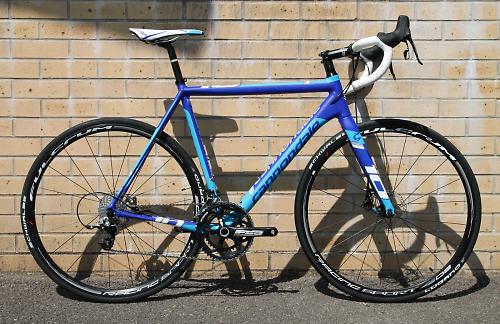
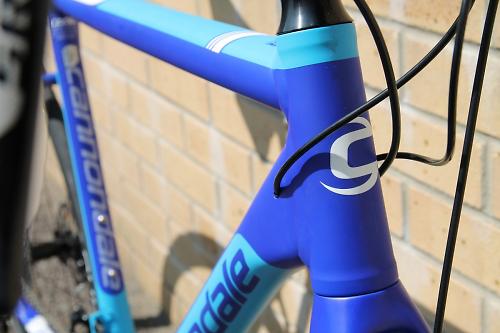
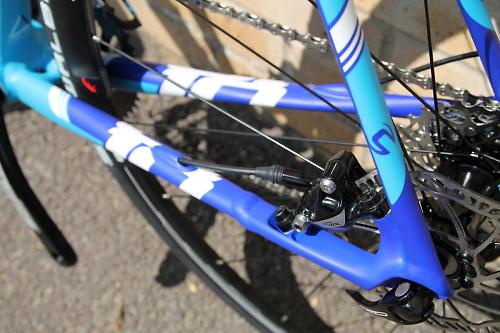

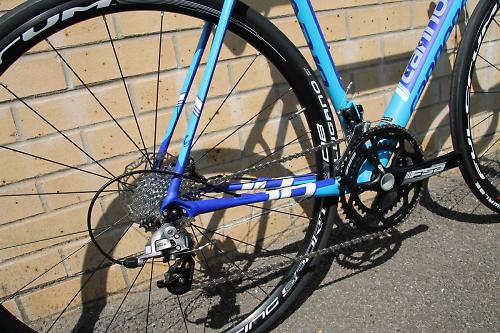
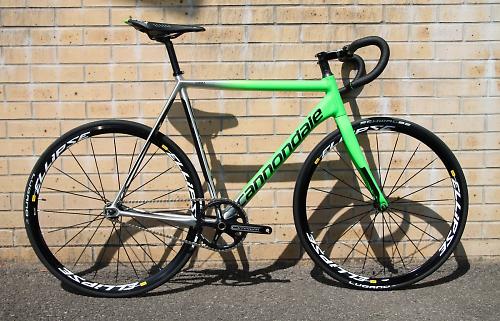
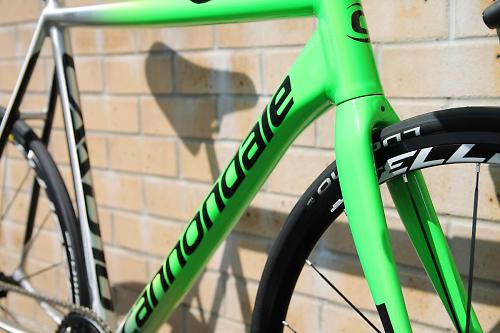


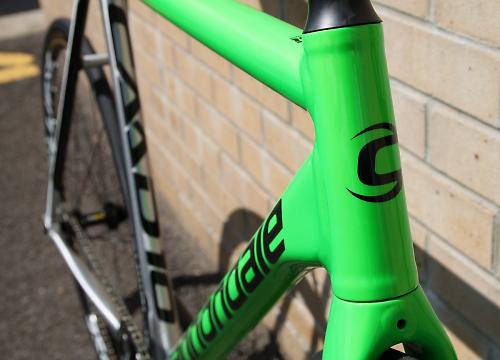
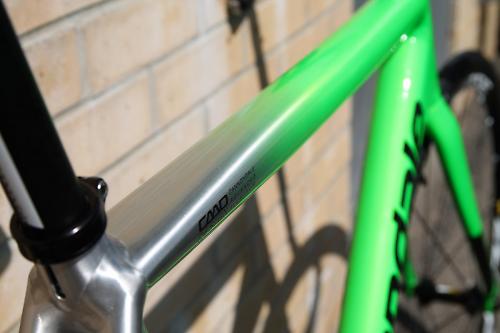
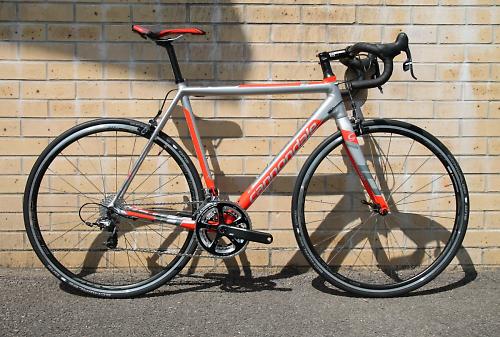
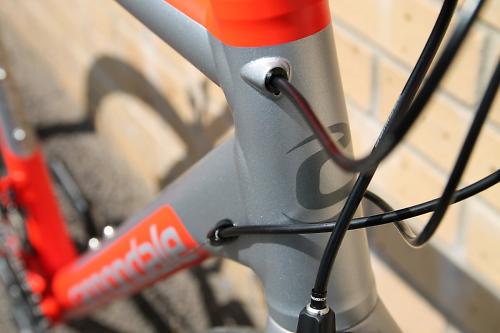
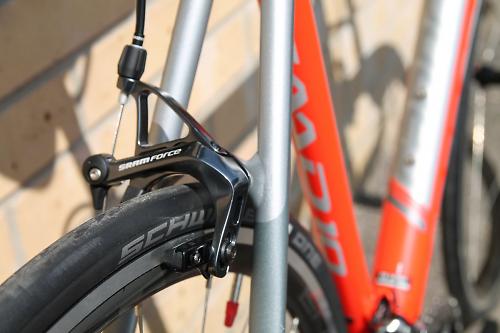
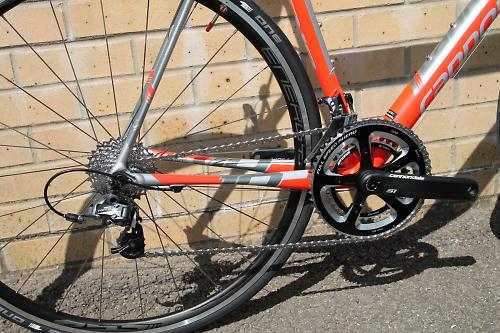
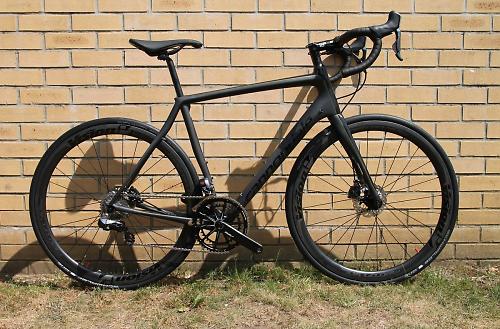


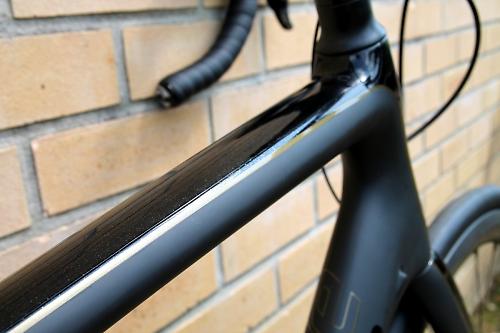
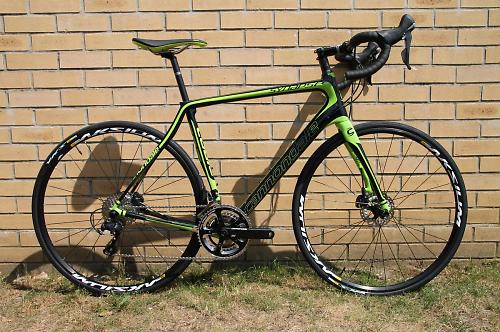
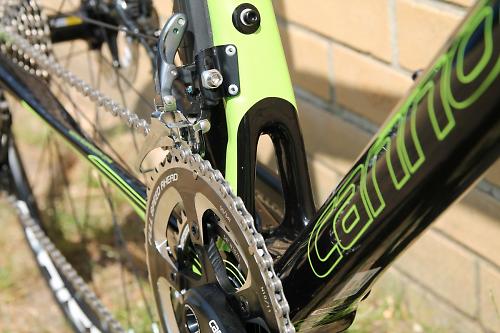




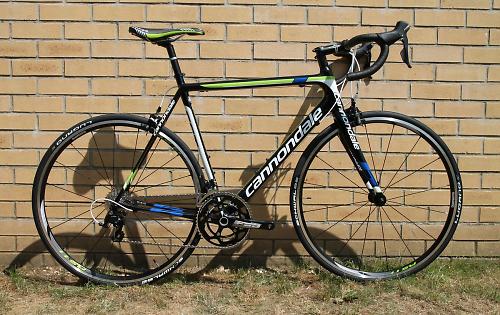
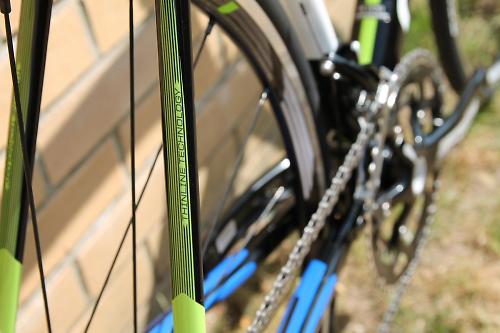
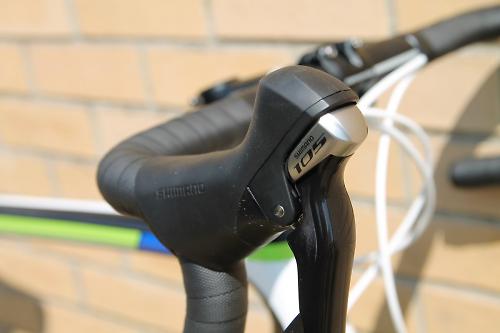
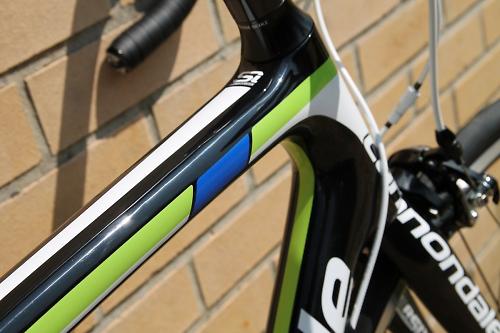
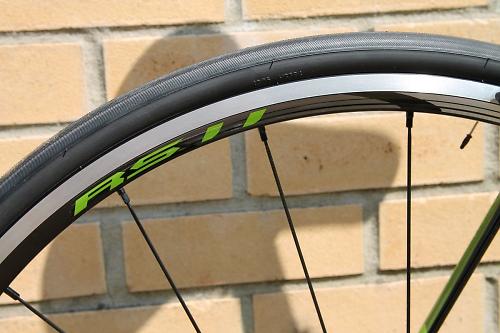
Add new comment
31 comments
Absolutely.
No, of course it doesn't.
Nope.
No, it isn't necessarily. The experience of 'good' disc brake systems has moved rather beyond "gospel" and it's far from "limited ... very particular personal experience". Ditto for the experience with 'good' rim brake systems.
Ah well, i'd disagree that you know best as, scarily for someone selling bikes, it seems you have a rather odd perception of what makes a 'good' braking system.
Of course people over generalising about the benefits of a particular braking system can be ridiculous - but there are some benefits that appear in general assuming a reasonably level playing field, e.g. not comparing the best hydraulic brakes with the worst V-brakes.
Pages